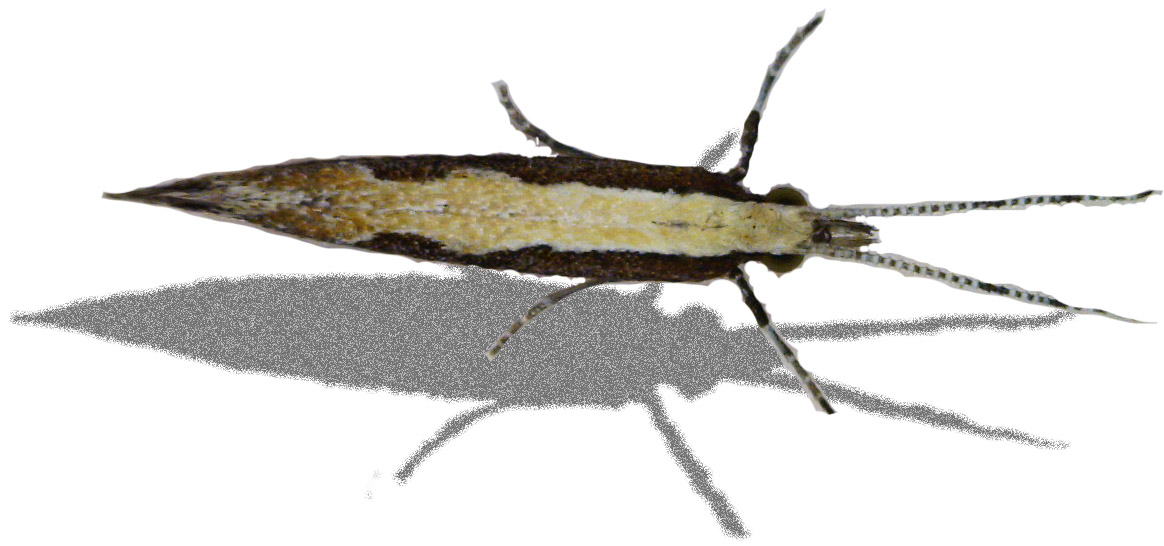
|
|
|
|

|
|||
|
|
|||
To my surprise, the diamondback moth (DBM) has already returned to the desert, and its timely occurrence happens to coincide with the establishment of early brassica transplants. I was not anticipating this early of an arrival; but they are definitely here. We began to pick up a few DBM moths in traps during the week of Aug 19-26. The last moths caught prior to this was in early July near a brassica seed crop. Then during the week of Aug 26-Sep 2, traps captured a higher number of diamondback moth adults in several areas. A total of 22 DBM adults were caught in 7 traps during that week. May not sound like a lot, but more than what I expected. In all but one location, the moths were caught in traps located adjacent to newly transplanted cauliflower or cabbage fields (See DBM Trap Network). Moreover, since Monday we have seen a sharp increase in moths captured, particularly in Dome Valley and Wellton. At one trap location in Wellton, I counted 31 moths captured over 2 nights. There have also been a number of reports from PCAs in the past 2 days of adult DBM flying within fields. The interesting thing is that no one has reported any eggs, larvae or feeding damage on transplants in the fields where these adults are being found. Could be that the Verimark tray drenches are preventing DBM colonizarition so far. Time will tell. This early moth activity seems unusual to me, but maybe it’s because I’ve been looking so hard for them. The key question is where did these adults come from? The answer is important as it may indicate whether we are dealing with the same diamide resistant population we battled in 2016-17, or a completely different population with resistance to some other chemistry or nothing at all. In my view, there are 3 potential points of origin for these DBM adults. 1) Local Residents - I’ve always assumed DBM would not be capable of spending the summer (mid-June to mid-August) in the desert because of the lack of a suitable host. Our trapping data appears to support this hypothesis since we caught no moths during this period. But don’t know for sure. 2) Hitchhikers – another potential source could be the transplants themselves. Very possible, and can’t be ruled out, but the transplants where moths have been reported/captured have originated from six different nurseries so far (4 from coastal CA and 2 local). Have not picked up any DBM adults in direct seeded broccoli yet, but time may tell. 3) Immigrants - We know that DBM are capable of migrating long distances in winds, and given the widespread occurrences of the moths so far, it may be possible that recent storms may be bringing some of them into the area from the south. It may just be a coincidence that the large increase in moth activity in the last 2-3 days follows a tropical storm disturbance that moved through the area this pest weekend? We may never know the origin, but trust me we will continue to investigate. The bottom line: PCAs and growers should anticipate an early occurrence of DBM this season and prepare accordingly. For more information of managing DBM on fall crops see Guidelines for Diamondback Moth Management in Fall Cole Crops. | |||
| Back | |||
|
For questions or comments on any of the topics please contact Marco Pena at the Yuma Agricultural Center.
|
|||
|
Home |
Cotton | Veggies |
Forages | Grains
| Citrus |
Crop x Crop Insects | Diseases| Weeds | Pesticides | Economics | News | Weather | Research | Photos | Contacts | General Info. Copyright © 2001 University of Arizona, College of Agriculture and Life Sciences Webmaster: Al Fournier (acis@ag.arizona.edu) |
|||



